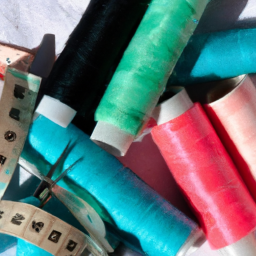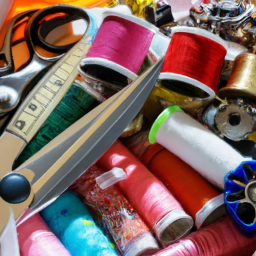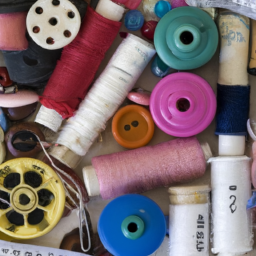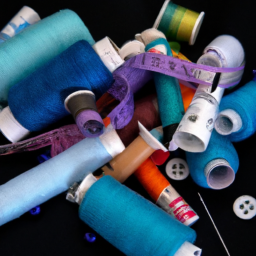
1. Preparing the Sewing Machine
To start threading your sewing machine, first, make sure it is turned off. Locate the spool pin on top of the machine and place your spool of thread onto it.
Next, find your thread guide and bring the thread through it. Then, look for the bobbin winder and wrap the thread around it a few times, securing it with your hand.
After that, locate the bobbin case and insert the bobbin into it. Follow the markings to ensure the thread is properly placed. Once inserted, pull the thread through the slot, leaving a tail.

2. Threading the Upper Thread
Thread the upper part of the machine by following these steps:
- Locate the tension control dial and ensure it is set to the default position.
- Bring the thread from the bobbin area to the upper thread guide on top of the machine.
- Guide the thread through the upper thread guide, making sure it goes between any tension discs or hooks.
- Now, locate the take-up lever and wrap the thread around it from right to left.
- Finally, guide the thread through the needle, from front to back.

3. Testing and Adjusting
After threading the machine, you should now perform a few tests:
- Turn on the sewing machine and check if the needle goes up and down smoothly while you turn the handwheel.
- Sew a few stitches on a scrap piece of fabric to ensure the tension is correct.
- If the stitches are too loose or too tight, consult your sewing machine’s manual to adjust the tension settings accordingly.
4. Additional Tips
Here are a few extra tips to keep in mind:
- Always use the appropriate type and weight of thread for your sewing project.
- Regularly clean and oil your sewing machine to ensure smooth operation.
- Replace the needle frequently to prevent breakage and achieve the best stitching results.
With these steps, you should now be able to thread your sewing machine correctly and start your sewing projects with ease!





